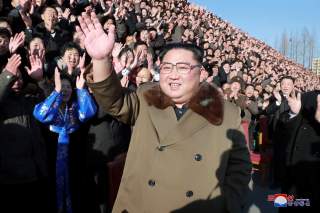The Hanoi Summit – We Asked Alexandra Bell What Happens Next in U.S.-North Korea Relations
"Even with a narrow focus, a step-by-step process is the only logical way ahead."
Editor’s Note: Looking for more opinions on where we go after the Hanoi summit? Check out all 80 expert takes on where U.S-North Korea relations go next here.
Abrupt. Confusion. Miscommunication. Misunderstanding. Chaos. Failure.
Not words that you want to hear in reference to nuclear negotiations. To say that things went poorly in Hanoi is a bit of an understatement, but there is no sense in crying over a failed summit. Recent reports of activity at the Sohae Launch Facility serve as a reminder of why President Trump and Chairman Kim Jong-un were engaging in diplomatic pageantry in the first place. North Korea’s illicit weapons programs pose a global and regional security threat. There is no way to reduce that threat other than through careful, technical, and likely tedious diplomacy.
There are three things the United States should do to get the diplomatic process back on track.
First, Trump needs to accept a few things about Kim. He is not a friend, he is not a great leader, and he will not give up his nuclear weapons in return for partial sanctions relief and a beachside condo complex. To be clear, economic incentives will be a part of any successful deal, but the Kim regime will need security guarantees, as well. Those kinds of guarantees will require trust, and trust like that can only come through the successful implementation of incremental measures.
Relatedly, the Trump Administration must abandon the idea of a grand bargain that deals with every threat. The North Korean nuclear program and its associated delivery systems present the greatest threat to international stability, so that is where our initial focus should lie. Even with a narrow focus, a step-by-step process is the only logical way ahead. By demonstrating good-faith implementation of small agreements, we can build to bigger ones.
Finally, in order to do any of this, the United States needs to get its own diplomatic house in order. That starts with clear, streamlined, and consistent messaging about what we want and how we plan to get it. It continues with finally getting key leaders into place. There are currently nine vacant senior positions at the State Department that could have a direct and indirect bearing on a North Korean negotiating process. With a full team in place, seasoned diplomats and technical experts can go about the difficult work of verifiably rolling back the North Korean nuclear program. If President Trump supports and empowers them, he just might get that signing ceremony he missed out on in Hanoi.
Alexandra Bell is the Senior Policy Director at the Center for Arms Control and Non-Proliferation and was formerly a Senior Advisor to the Under Secretary of State for Arms Control and International Security.
Image: Reuters

